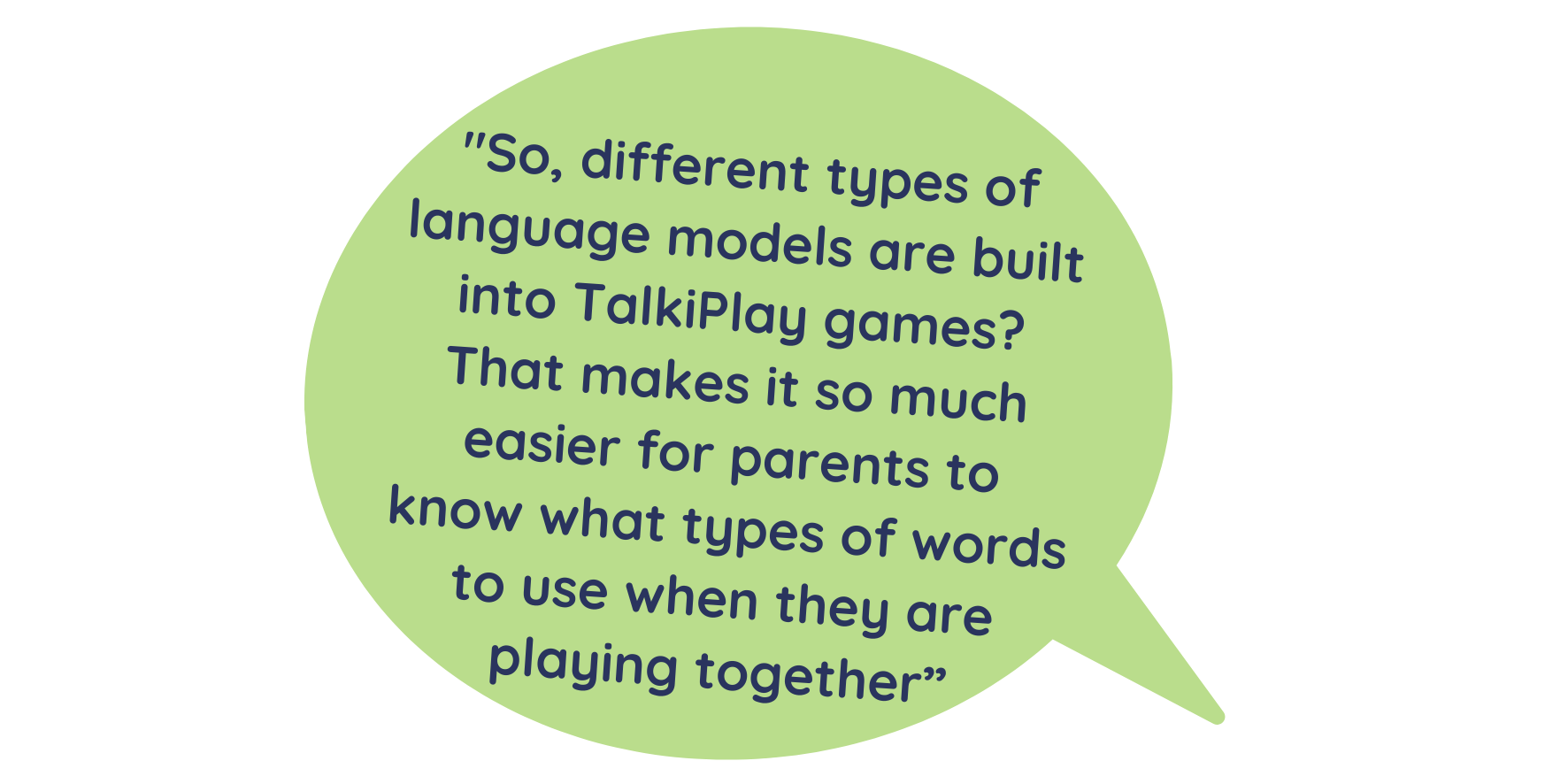
Language modelling and TalkiPlay
The concept of Language modelling is centered around providing children with opportunities to be immersed in a variety of words within meaningful contexts. Providing accessible language examples will assist children to make sense of their experiences.
Fostering a confident communicator requires more than just saturating them in spoken words… here are the top 5 features of language modelling that will elevate your interactions.
1. Language must be relevant and accessible
Make sure the words that you use are situation-specific. In short, your child must have access to helpful words, when and where they need them!
If you're unsure about which words will support language development, I urge you to stay in the moment and narrate what is happening right then and there - What is in their hand? What would they say if they could?
Consider the types of words that you use - not just labels or names (dog, car, cow) but consider adding verbs (which are doing words!) like ‘explore’, ‘chase’, shout’. If you do find yourself naming, don’t shy away from complex words if they are providing value and interest, words like ‘reptile’ or ‘carnivore’.
2. Language must capture, maintain and re-gain attention
Many parents have reported the phenomenon of a child who "can't hear" when asked many, many times to put on their shoes, yet can hear a chocolate wrapper being opened within a 3 kilometre radius!!
Some sounds just spark a child’s attention and others fade into background noise - we don't want the words we speak to our children to become the latter.
Make your words interesting by creating variation in the volume and tone of your voice and be playful in your facial expressions - this will make you the most fun toy in the room, and you will be immune to your child’s pesky “selective hearing”.
3. Language modelling must not be a test because you child can't get it wrong
When talking doesn't come as easily for some children, adults can get excited when their child says a new word and we are overjoyed and want to hear it again and for friends and family to celebrate this new word. Because of a deep desire for your child to be a successful communicator, we want to teach them more words and ideas, and pretty soon, playing together starts to sound like this...
" 'What’s this? What colour is it? It's red, you can say red, can you say red?, red, red. Show me the red one'....."
Within a few moments, your child has wandered off because playing together just isn’t as fun anymore. Did you know that even if your child is not yet saying new words or repeating words that you have heard before, it doesn't mean they aren't learning? You are building their understanding of language which in turn supports their expressive language… It just takes time - keep doing what you are doing and trust the process.
4. Language modelling must include conversational turns
We know that children need to be around words to learn language, however did you know that the SINGLE most powerful way to enhance a child's language is to engage them in two-sided conversations?
Two-sided conversation is markedly more powerful than hearing language used on television, being AROUND adults talking or even being spoken directly to.
As adults, sometimes we talk too much and don’t leave time and space for your child to take a turn - so it's important to be quiet and wait. When we wait, we give the child time to listen, process and understand what you may be saying. It gives them time to formulate an idea and take their turn.
5. Language modelling must be repetitive!
Children are innately driven to repeat experiences that give them immediate, positive feedback. Repetition builds cognition, communication and play skills in the same way that strong muscles can be built through multiple reps at the gym.
Studies have shown that the brain creates new pathways when a task is repeated often, which means that they are remembered better and retained for longer.
Some children may want or need to make the same sound or play with a toy the same way every single time you see them. Adults find repetition quite uncomfortable and challenging, however it's important to lean into the discomfort because your child may find joy in hearing their TalkiPlayer say “Hi I’m a train…” 27 times in a row. This is ok, this is how they learn, and this is where TalkiPlay can help!
